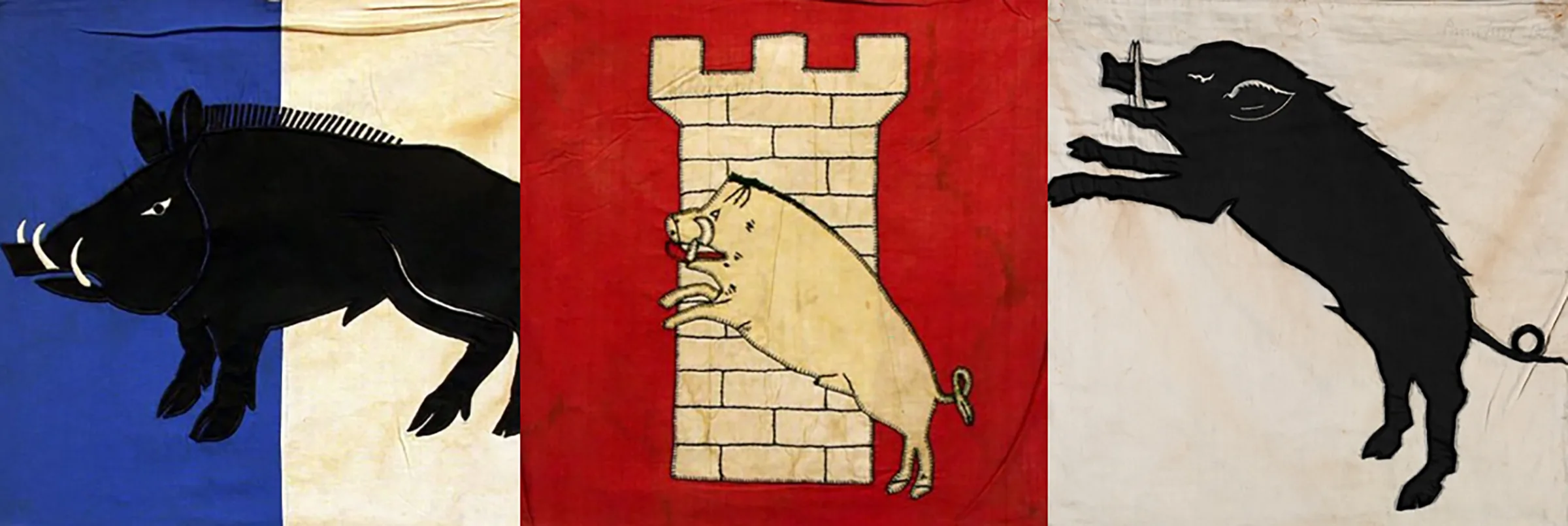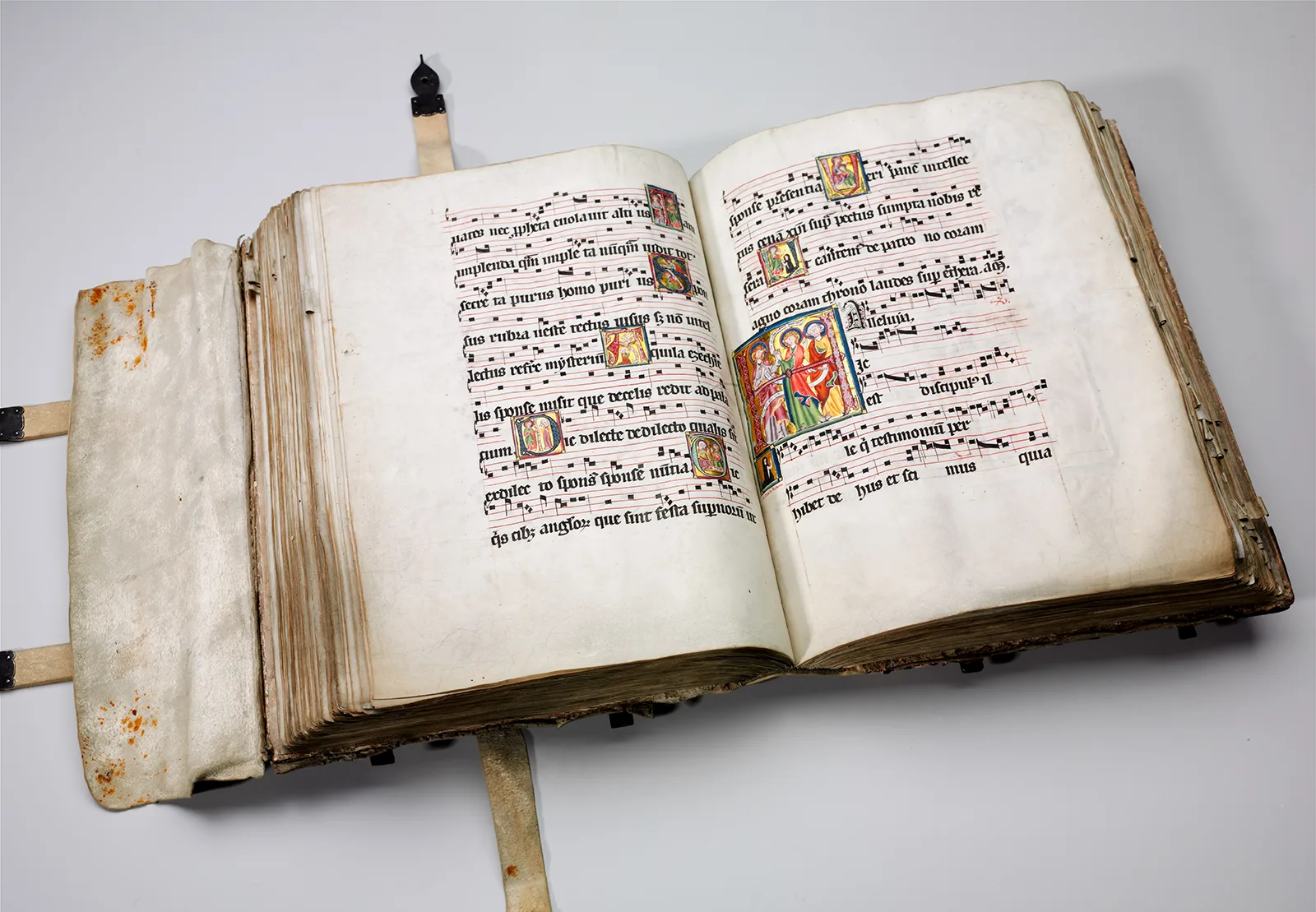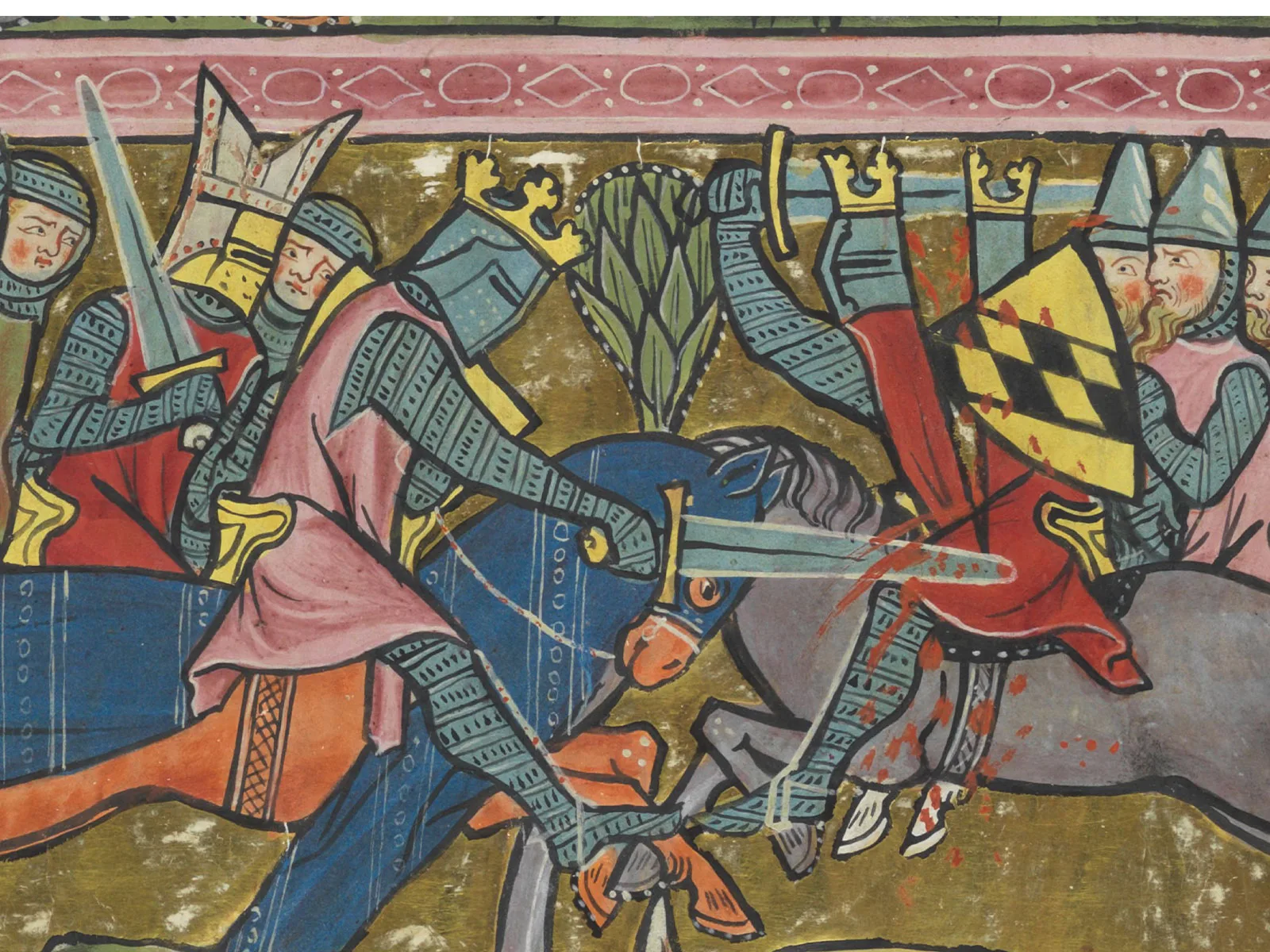
In the name of the Lord…
What do the symbols and inscriptions on medieval swords mean? An exercise in decipherment.

The systematic study of symbols and inscriptions on sword blades is traced back to Swiss historian and director of the Bern Historical Museum Rudolf Wegeli (1877-1956). Using numerous examples from the early Middle Ages to the early modern period, Wegeli attempted to work out a system of classification and decipherment. This aspect of research was neglected for a long time. Since the 2010s, however, scientific research into sword inscriptions has experienced a revival.
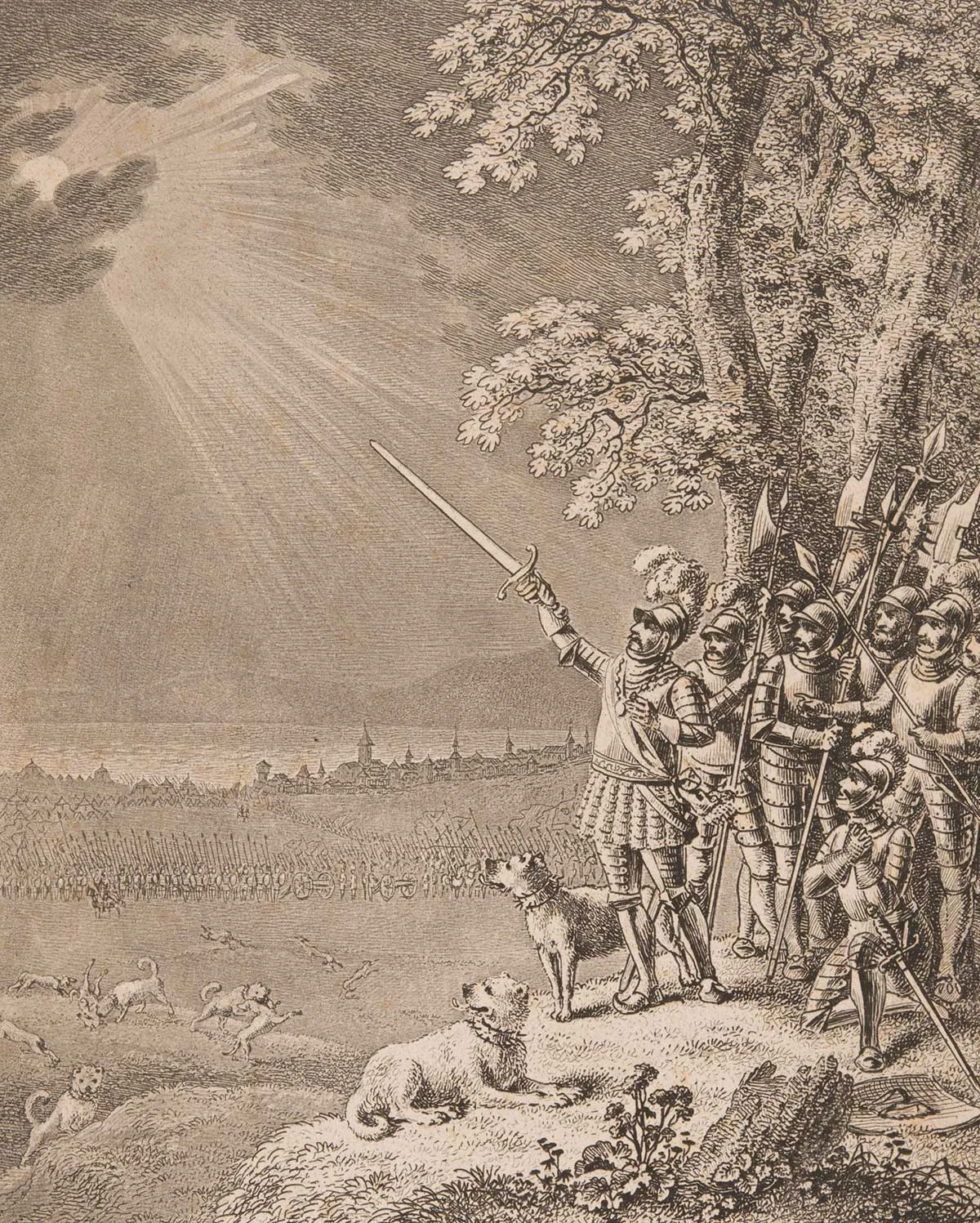
A brief introduction
One well-known acronym is INRI, which stands for ‘Iesus Nazarenus Rex Iudaeorum’ (Jesus of Nazareth, King of the Jews). The deciphering and dating of inscriptions is a specialist field of epigraphy, the study of inscriptions, on which weapons historians rely. Research into sword inscriptions is therefore a valuable interdisciplinary exercise. However, the point is not just to decipher the inscription; the specific form of the characters used may be important for research on palaeography (the study of historic writing systems), for dating and for identifying the possible region of manufacture of a particular weapon. Three examples shed light on this fascinating field of the study of historical weapons and inscriptions.

In the name of the Lord

The purpose of the clustering, and the position of the I’s, we just don’t know. It could be an unwitting error in rendering the incantation. The quite roughly formed letters are based on the capital letters of Roman or Romance examples. Damascening with iron appeared between 1050 and 1150, which also tallies with the style of the writing system used. However, the pommel of the sword is a shape that became fashionable in the early 13th century. We can therefore hypothesise that it might be an older blade that was later given a new pommel.

In the name of the Saviour?
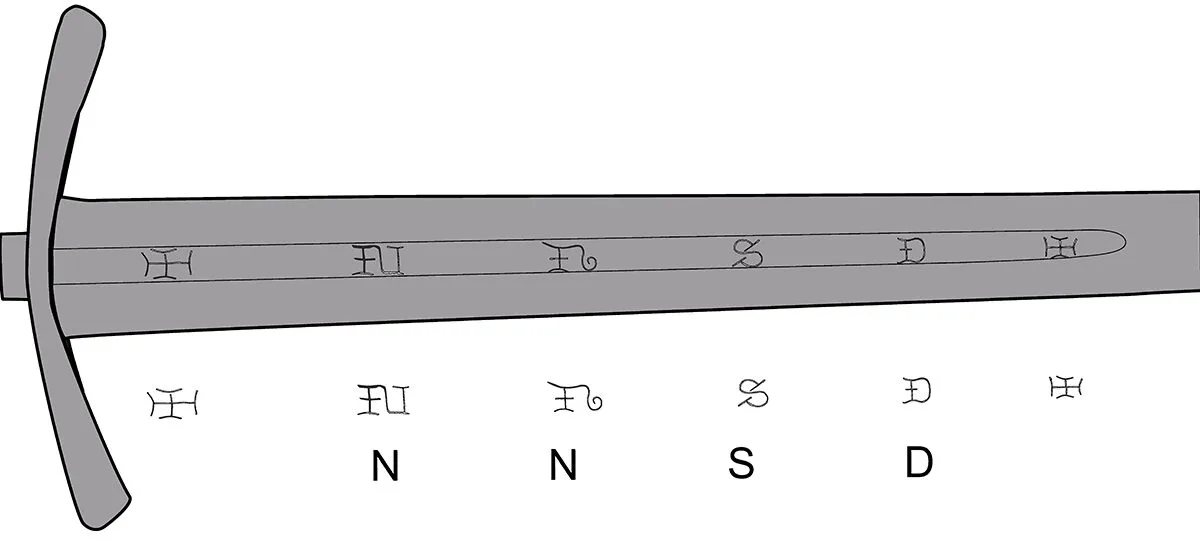
With SANCTUS as an adjective:
IN NOMINE SANCTI DOMINI (In the name of the Holy Lord)
or
IN NOMINE SANCTI DEI (In the name of the Holy Spirit)
With SALVATOR:
IN NOMINE SALVATORIS DOMINI (In the name of the Saviour and Lord)
or
NOMINE SALVATORIS DOMINI
All interpretations of the incantation are probably modified forms of various invocations that were used in the Catholic liturgy and in prayers. However, the letters NN (S) D most likely reflect, essentially, the set phrase IN NOMINE DOMINI. The appeal to the Saviour, on the other hand, suggests an appeal to Jesus Christ. Based on the script of the lettering used, we could also infer that this work dates from the late 13th or early 14th century.
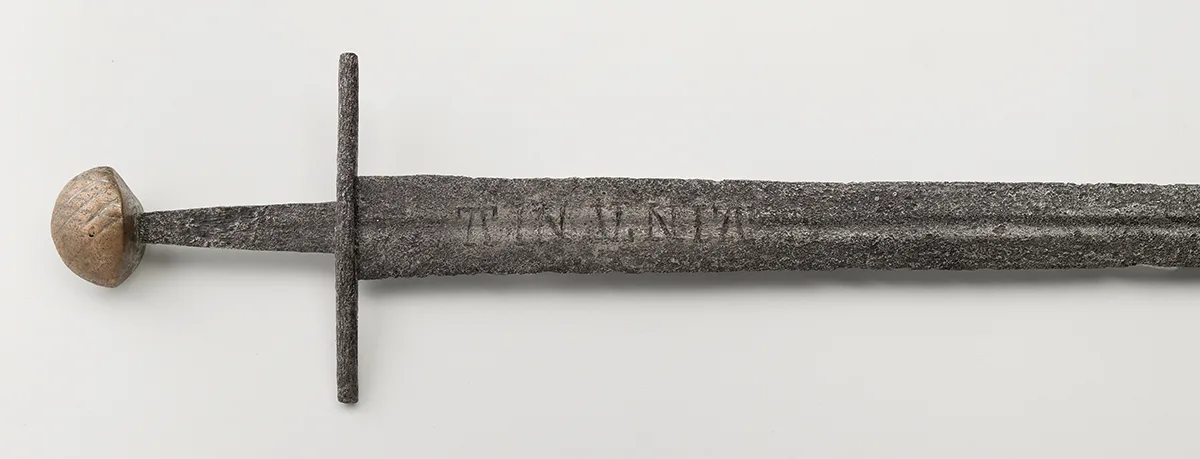
By God’s grace
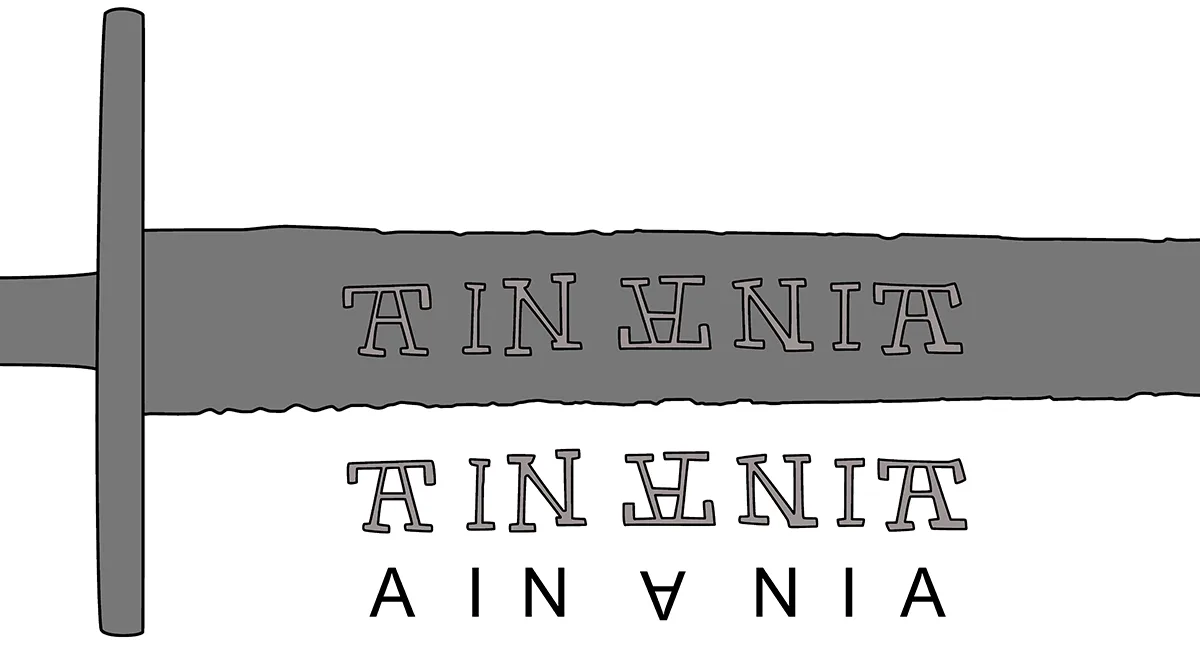
The letters used are strictly geometrical and linear and do not yet exhibit any of the ‘rounding’ of the lines, as will be the case with the transition to Gothic script. The shape of the lettering and the iron damascening date the blade most likely to the last quarter of the 12th century.

